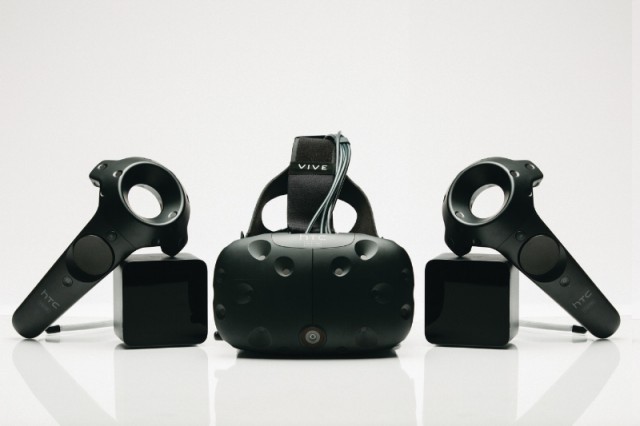
Most consumers are oblivious to the existence of virtual reality headsets. Part of the problem is that, even though some companies have announced VR devices and there has been lots of talk surrounding them, only a few of them are actually available for consumers to buy.
HTC is now adding its new Vive Pre to that list. The company's second-generation VR headset, which it just announced at CES 2016, will be made available to the public this April.
HTC announced its first VR headset -- called Vive -- at last year's MWC conference. Compared to that, the new Vive Pre, which is touted to be the "first VR hardware to support SteamVR" -- is said to be more comfortable to wear, and deliver a more immersive experience as a result.
To help accommodate different head shapes, there are interchangeable foam inserts and nose gaskets. Vive Pre is also more compact and has a redesigned strap meant to increase stability and balance. HTC also promises improved visuals, in both image clarity and display brightness, and compatibility with eyewear.
To aid in immersion, HTC has attached a new front-facing camera to Vive Pre, which it claims makes it possible for users to interact with others without taking the headset off. Aiding this are updated controllers that are now said to be more comfortable, and also more compact, quieter and better tracking base stations.
The SteamVR part means that it will be able to be used with games available on Steam, Valve's game distribution platform. HTC says that it has also worked with "thousands of developers" to create content that its Vive Pre users can take advantage of, some of which is also being showcased at CES 2016.
The part that HTC has not discussed is cost. VR headsets that do not work on their own are pretty inexpensive, but that's not likely to be the case with Vive Pre. Samsung's Gear VR, which requires one of the company's current flagship smartphones to work, costs $99.99, but you first have to shell out hundreds of dollars for one of the compatible smartphones.
Also, as pointed out by Nvidia, a typical PC cannot handle VR games, requiring very powerful hardware to deliver a good experience. So, even though you maybe can afford to buy a Vive Pre, your PC might also need some attention. It will be a pretty expensive affair, at least at first. But, that's the price early adopters have to pay.

